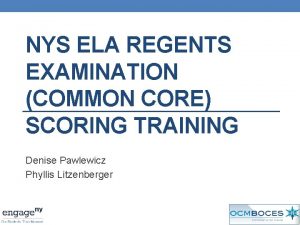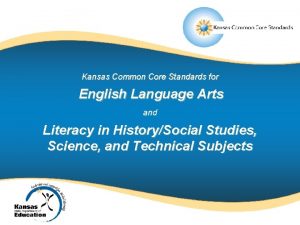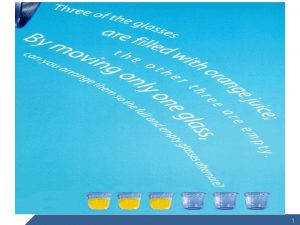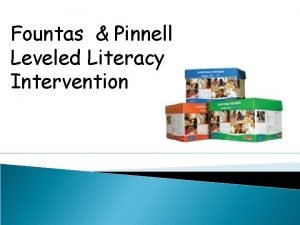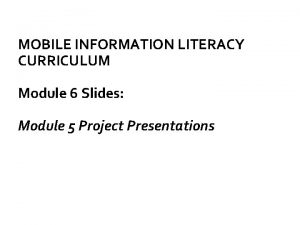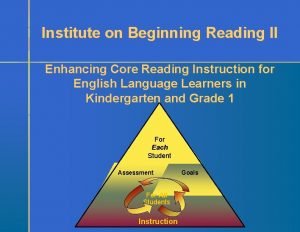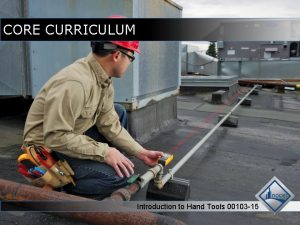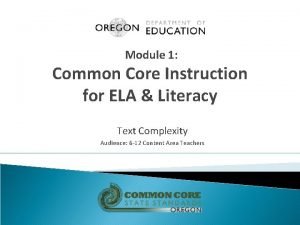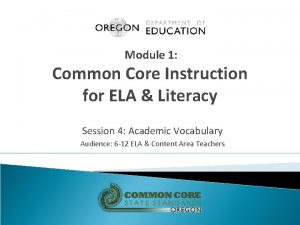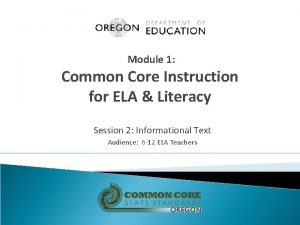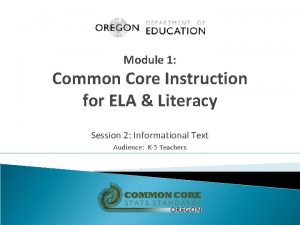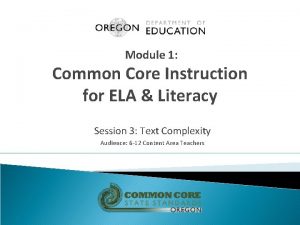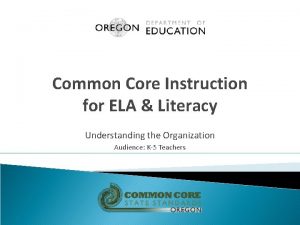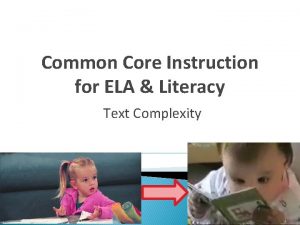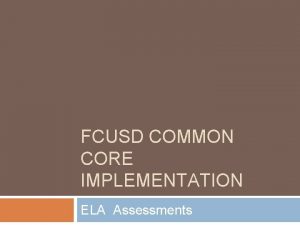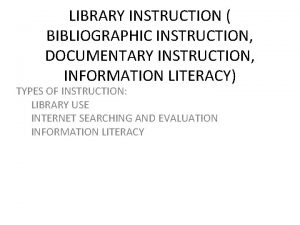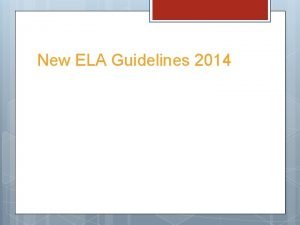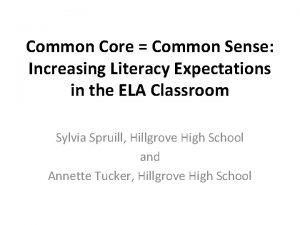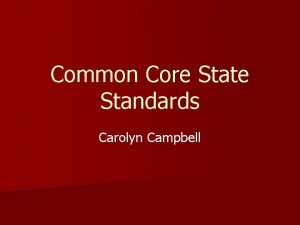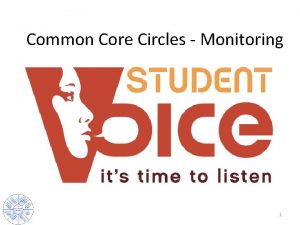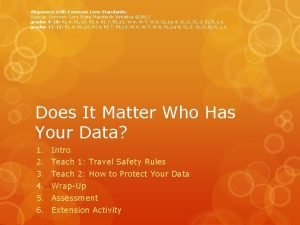Module 1 Common Core Instruction for ELA Literacy


















- Slides: 18

Module 1: Common Core Instruction for ELA & Literacy Session 4: Academic Vocabulary Audience: K – 5 Teachers

Expected outcomes Become familiar with the concept of academic vocabulary (Tier 2 words) and why it is important to teach Become familiar with criteria for selecting Tier 2 words for explicit instruction Explore some strategies and resources for teaching Tier 2 words ◦ In the K-12 Teachers: Building Comprehension in the Common Core ◦ In Chapter 3: Instruction of the Oregon K-12 Literacy Framework 2

Language Anchor Standard 6 “Acquire and use accurately a range of general academic and domain-specific words and phrases …” 3

Three tiers of words Domain-specific words General academic words Words of everyday speech 4

Three tiers of words – Highly specialized, subject-specific; low occurrences in texts; lacking generalization � ◦ E. g. , trapezoid, tonsillectomy, geosystem, carburetor, lava –Abstract, general academic (across content areas); encountered in written language; high utility across instructional areas � ◦ E. g. , consistent, expectation, observation, relative, accumulate – Basic, concrete, encountered in conversation/ oral vocabulary; words most student will know at a particular grade level � ◦ E. g. , school, house, walk, eat, animal, road 5

Tier 3 words are often defined in the texts In Mars’ northern half, or hemisphere, is a huge raised area. from Berger, Melvin. Discovering Mars: The Amazing Story of the Red Planet. New York: Scholastic, 1992. (1992) Light reflects, or bounces off objects. It also refracts, or bends. And it can be absorbed, or soaked up, by objects. from Hall, Leslie. “Seeing Eye to Eye. ” National Geographic Explorer September 2009. (2009) The top layers of solid rock are called the crust. from Simon, Seymour. Volcanoes. New York: Harper. Collins, 2006. (2006) They are called by several names—hurricane, typhoon, and cyclone are three most familiar ones. But no matter what they are called, they are all the same sort of storm. Lauber, Patricia. Hurricanes: Earth’s Mightiest Storms. New York: Scholastic, 1996. (1996) From “The Making of a Hurricane” 6

Why are “academic words” important? Are critical to understanding academic texts Appear in all sorts of texts and are highly generalizable Require deliberate effort to learn, unlike Tier 1 words Are far more likely to appear in written texts than in speech. Often represent subtle or precise ways to say otherwise relatively simple things Are seldom heavily scaffolded by authors or teachers, unlike Tier 3 words 7

Careful selection of words to teach In school settings, students can be explicitly taught a relatively deep understanding of about 300 words each year. Divided by the range of content students need to know (e. g. , math, science, history, literature), of these 300– 350 words, roughly 60 words can be taught within one subject area each year. It is reasonable to teach thoroughly about eight to ten words per week. -- more at K-12 Teachers: Building Comprehension in the Common Core 8

Criteria for selecting words to teach Importance of the word for understanding the text ◦ What does the word choice bring to the meaning of the text? (E. g. , precision, specificity? ) General utility of the word ◦ Is it a word that students are likely to see often in other texts? Are there multiple meanings? ◦ Will it be of use to students in their own writing? Students’ prior knowledge of the word and the concept(s) to which it relates ◦ How does the word relate to other words, ideas, or experiences that the students know or have been learning? ◦ Are there opportunities for grouping words together to enhance understanding of a concept? -- more at K-12 Teachers: Building Comprehension in the Common Core 9

Activity: Categorize vocabulary With partners, read the selections and identify Tier 3 words ◦ Important to the concept under study ◦ Unlikely to appear in texts on other subjects Tier 2 words ◦ ◦ Unfamiliar to most students at this level Likely to appear in texts on other subjects May have multiple meanings Can be grouped with other known ideas, words for instruction A few Tier 1 words ◦ Familiar to most students at this level, but likely to require attention for English language learners 10

Tier 3 Words “ 14 Cows …” Tier 1 Words ◦ Nairobi, Maasai ◦ Tribe/tribal, elders ◦ Diplomat, diplomatic, embassy “Moonshot …” ◦ ‘Sends word, ’ ‘sits up’ ◦ Village, ordinary ◦ ______________________ “Seeing Eye to Eye” ◦ ______________________ “ 14 Cows …” “Moonshot …” ◦ ______________________ “Seeing Eye to Eye” ◦ ______________________ 11

Activity: Select Tier 2 words to teach The word is central to understanding the text. The word choice and nuance are significant. Students are likely to see this word frequently. Students will be able to use this word when writing in response to the text. It is a more mature or precise label for concepts children already have under control. The word lends itself to teaching a web of words and concepts around it. 12

Tier 2 words in “ 14 Cows for America” Central to the meaning of the text ◦ ceremony Nuance, impact of word choice ◦ Jounces, rugged, splendor Frequency ◦ Response More precise label for known concepts ◦ tribe/tribal, elders, blood-red tunics, beaded collars Lend themselves to teaching a web of words ◦ Ceremony, splendor, brilliant, spectacular, marvel 13

Vocabulary instruction in both Meaning of specific words ◦ ◦ ◦ ◦ Provide student-friendly definition(s) Read the word in text Discuss examples and non-examples of the word Create semantic maps Teach multiple meanings Link new words to words students already know (CCSS Language Standard 5) Word-learning strategies ◦ By using contextual cues ◦ By using their existing knowledge of words and word parts ◦ (CCSS Language Standard 4) -- more at Oregon K-12 Literacy Framework 14

Checklist: Planning for explicit instruction Set a purpose for learning ◦ Describe what a ceremony is and identify examples. Identify critical details that define the new concept ◦ Dignified, formal acts; marks important event; traditional, done the same way over and over; public Use highly specific examples and non-examples ◦ Graduation, wedding, raising the flag, awarding Olympic medals ◦ Recess, lunchtime, reading circles Connect new concepts to previously learned material -- more at Oregon K-12 Literacy Framework 15

Practice, Review, and Deep Processing Sufficient to enable a student to know and use vocabulary without hesitation Distributed over time Cumulative, with vocabulary integrated into more complex tasks Varied so vocabulary use can be applied to multiple contexts -- more at K-12 Teachers: Building Comprehension in the Common Core 16

How did we do? What is one difference between Tier 3 and Tier 2 words? Why is it important to teach Tier 2 words? What are two criteria to consider when selecting Tier 2 words to teach in depth? What are some instructional procedures or strategies to include when teaching general academic vocabulary? 17

Suggested follow-up activities In grade level teams, analyze one or more core texts for Tier 2 and Tier 3 words. Plan instruction, review, and practice for selected Tier 2 words. In teams, discuss opportunities for students to review and practice using new academic vocabulary across subject areas and/or grade levels. 18
 Nys ela regents part 3 rubric
Nys ela regents part 3 rubric Kansas ela standards
Kansas ela standards Common core ela assessments
Common core ela assessments Achievethecore.org
Achievethecore.org Information and media literacy similarities
Information and media literacy similarities Media technology and information literacy venn diagram
Media technology and information literacy venn diagram How do you understand the term people media
How do you understand the term people media Cyber literacy and digital literacy
Cyber literacy and digital literacy Fountas and pinnell lli
Fountas and pinnell lli Differentiated instruction vs individualized instruction
Differentiated instruction vs individualized instruction What is direct instruction strategy
What is direct instruction strategy Media and information literacy module 6
Media and information literacy module 6 Enhanced core reading instruction
Enhanced core reading instruction C device module module 1
C device module module 1 Intro to hand tools
Intro to hand tools Inner core and outer core
Inner core and outer core Crust mantle core
Crust mantle core Which layer is the least dense
Which layer is the least dense Purpose of paradox
Purpose of paradox
